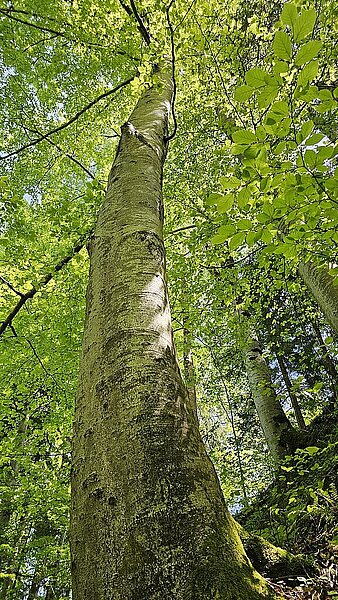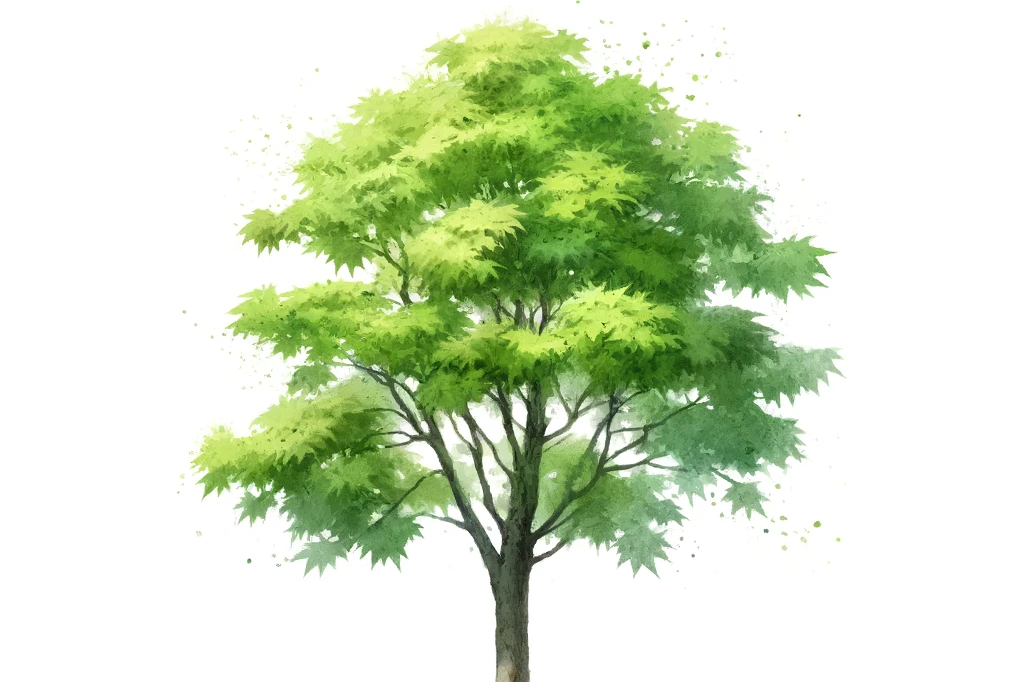Beech

What is beech?
Beech is the name for various tree species from the beech family. The best known are the copper beech and the hornbeam. The copper beech has smooth, green leaves that turn red in the fall. The hornbeam has rough, jagged leaves that turn brown in the fall. Both species have hard, brown nuts called beechnuts.
What are the benefits of beech for dogs?
Beech has several benefits for dogs that can promote both health and well-being. Here are some of them:
- Beech is rich in fiber, which can aid digestion and regulate bowel movements.
- Beech contains antioxidants that can strengthen the immune system and protect against free radicals.
- Beech has anti-inflammatory properties that can help with skin problems, joint pain or allergies.
- Beech has calming effects that can help with stress, anxiety or sleep disorders.
What are the disadvantages of beech for dogs?
Beech also has some disadvantages for dogs that need to be considered. Here are some of them:
- Beechnuts are toxic to dogs when raw as they contain hydrocyanic acid, fagin and oxalic acid. Eating raw beechnuts can cause symptoms of poisoning such as heavy panting, tremors, salivation and breathing difficulties. In the fall, dog owners should avoid beech forests or keep their dogs on a leash.
- Beech is very high in calories and can lead to obesity or diabetes if consumed in excess. A portion of 100 grams of beechnuts has about 500 calories.
- Beech can lead to intolerances or allergies in sensitive dogs. Symptoms can include diarrhea, vomiting or skin rashes.
How do I feed my dog beechnuts?
If you want to feed beech to your dog, you should follow some tips to minimize the risk of side effects. Here are some of them:
- Feed only boiled or roasted beechnuts, which no longer contain toxins. You can roast them in the oven or in a pan until they are crunchy.
- Only feed small amounts of beechnuts as a treat or addition to food. A rule of thumb is about one teaspoon per 10 kilograms of body weight per day.
- Only feed fresh or dried leaves or bark from hornbeam, which is not poisonous. You can prepare them as a tea or mix them into the food.
- Monitor your dog for any signs of discomfort or poisoning after feeding beech. If you are unsure, contact your vet.
Beech is a natural ingredient that can have many benefits for dogs. It can aid digestion, strengthen the immune system, reduce inflammation and soothe. However, you should also be aware of the disadvantages of beech. Raw beechnuts are poisonous to dogs and can lead to symptoms of poisoning. Beech is also very high in calories and can lead to obesity or diabetes. Beech can also lead to intolerances or allergies. If you want to feed your dog beech, you should only use boiled or roasted beechnuts, fresh or dried leaves or bark from the hornbeam and only give small amounts as a treat or addition to the food. Observe your dog after feeding beech for possible signs of discomfort or poisoning.
Properties 5
Are you looking for other ingredients with a specific property?
Just click on them to find more.
If you notice any signs of hypersensitivity or poisoning in your dog, you should see your vet immediately. We are not a substitute for a vet, but we try to be as accurate as possible. Every dog reacts differently and we recommend you get a second opinion or consult your vet if in doubt.
Stay healthy and take good care of your four-legged friend!😊
Similar to Beech
Oak is a plant genus consisting of over 600 different species. The best-known species in Germany is the English oak or summer oak (Quercus robur), which can grow up to 40 meters high. The oak has...
Maple is the name of a genus of trees and shrubs found in the northern hemisphere. There are around 200 species of maple, which differ in size, shape, color and leaf structure. The best-known...
The birch is a deciduous tree that is native to Europe, Asia and North America. There are different types of birch, for example the silver birch, the sand birch or the paper birch. The birch has...
Ash is a tree that occurs in various forest communities, especially on moist or dry sites where beech is less competitive. The ash has a deep taproot with extensive lateral roots that give it a good...



